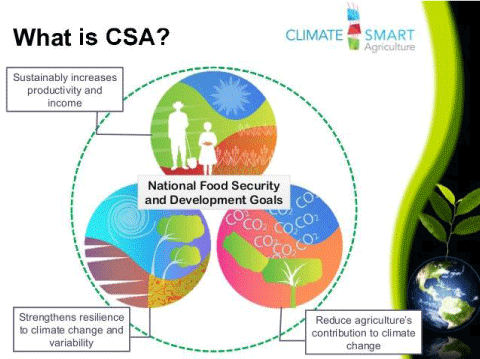Sustainable Aquaculture Practices For Seafood Production
Aquaculture is an essential part of our world's sustainable food production system. It allows us to cultivate various aquatic organisms, such as fish, shellfish, and plants, in a controlled environment. These practices help reduce the pressure on wild fish populations and support sustainable seafood consumption.
Aquaculture plays a significant role in meeting the increasing global demand for seafood while minimizing the negative impacts on the environment. In this post, we will explore five approaches to making aquaculture more sustainable and environmentally friendly.
What is Aquaculture?
Aquaculture, also known as fish farming or aquafarming, refers to the cultivation of aquatic organisms under controlled conditions. It involves the breeding, rearing, and harvesting of fish, shellfish, algae, and even plants in various environments such as tanks, ponds, or cages.
As the world's population continues to grow, the demand for seafood rises. Aquaculture has become an essential industry to conserve wild fish stocks and ensure the availability of nutritious seafood for future generations.
Ideas For Making Aquaculture Sustainable
1. Enhancing Water Management: Efficient water management is crucial to minimize the environmental impact of aquaculture. Implementing technologies such as recirculating systems and water treatment plants can help conserve water resources and reduce pollution caused by excessive nutrient discharge.
2. Using Sustainable Feeds: Adopting sustainable feed practices is essential to minimize the negative ecological footprint of aquaculture. Utilizing alternative protein sources like plant-based feeds can reduce the reliance on wild fish stocks while ensuring a balanced diet for farmed fish.
3. Promoting Integrated Multi-Trophic Aquaculture (IMTA): IMTA is a holistic approach that involves cultivating multiple species together in a symbiotic system. This method allows the waste produced by one species to be utilized as a nutrient source for another, reducing the environmental impact and enhancing overall system productivity.
4. Monitoring and Reducing Pollution: Implementing rigorous monitoring programs can help identify and mitigate the potential negative impacts of aquaculture on surrounding ecosystems. Regular water quality testing and strict regulations can ensure sustainable practices, reducing pollution and protecting marine biodiversity.
5. Investing in Research and Innovation: Continued research and innovation are crucial for the advancement of sustainable aquaculture practices. Developing new technologies, improving breeding processes, and finding alternative energy sources can further enhance the industry's environmental performance.
Recommendations for a Sustainable Aquaculture Future
Building a sustainable future for aquaculture requires collective efforts from industry leaders, policymakers, and consumers. Here are some recommendations to drive positive change:
1. Encourage Collaboration: Foster collaboration among different stakeholders, including government bodies, environmental organizations, and aquaculture producers. By working together, we can develop comprehensive strategies and solutions for sustainable aquaculture.
2. Raise Consumer Awareness: Educate consumers about the importance of supporting sustainable aquaculture practices. Encourage responsible seafood consumption and promote transparency in the industry by providing information about the origins and sustainability of the seafood they purchase.
3. Provide Financial Incentives: Governments can play a vital role by offering financial incentives to aquaculture producers who implement sustainable practices. Grants, tax benefits, and subsidies can motivate businesses to adopt eco-friendly technologies and reduce their environmental impact.
4. Strengthen Regulations: Establish robust regulatory frameworks that ensure compliance with sustainability standards across the aquaculture industry. Regular inspections, audits, and penalties for non-compliance can incentivize responsible practices and protect ecosystems.
5. Invest in Education and Training: Support research programs, scholarships, and training initiatives focused on sustainable aquaculture practices. By equipping scientists, technicians, and farmers with the necessary knowledge and skills, we can drive innovation and foster a sustainable future.
Listicle of Aquaculture Practices
- Recirculating Aquaculture Systems (RAS): A closed-loop system that recirculates and filters water, reducing resource usage and environmental impacts.
- Mariculture: The farming of marine organisms in their natural habitats, providing employment opportunities in coastal communities.
- Seaweed Farming: Cultivating seaweed not only for food but also for biofuel production and carbon sequestration.
- Polyculture: Simultaneously farming multiple species to utilize different ecological niches and reduce disease and pest outbreaks.
- Offshore Aquaculture: Moving fish farms further offshore to minimize the environmental impact and increase production capacity.
Question & Answer Section
Q: How does aquaculture contribute to food security?
A: Aquaculture plays a crucial role in meeting the growing global demand for seafood. By providing a controlled and sustainable environment for fish and shellfish production, aquaculture ensures a consistent and reliable food source while reducing the pressure on wild fish populations.
Q: What are the environmental concerns associated with aquaculture?
A: Environmental concerns include nutrient pollution, the spread of diseases and parasites, genetic interactions between farmed and wild populations, and habitat degradation. However, through sustainable practices and ongoing research, many of these concerns can be minimized or mitigated.
Q: How can consumers support sustainable aquaculture?
A: Consumers can support sustainable aquaculture by choosing seafood products that are certified as sustainably farmed or caught. Labels such as the Aquaculture Stewardship Council (ASC) or Marine Stewardship Council (MSC) indicate that the product meets specific sustainability criteria.
Summary of Sustainable Aquaculture
As the demand for seafood increases, it is important to ensure that our methods of production are sustainable and environmentally friendly. Through various approaches such as enhanced water management, sustainable feeds, and promoting integrated multi-trophic aquaculture, we can minimize the negative impacts of aquaculture on marine ecosystems.
Collaboration among stakeholders, raising consumer awareness, and strengthening regulations are crucial steps towards a sustainable aquaculture future. By implementing these recommendations and investing in education and research, we can build a thriving aquaculture industry that supports food security, protects the environment, and meets the needs of future generations.




Post a Comment for "Sustainable Aquaculture Practices For Seafood Production"